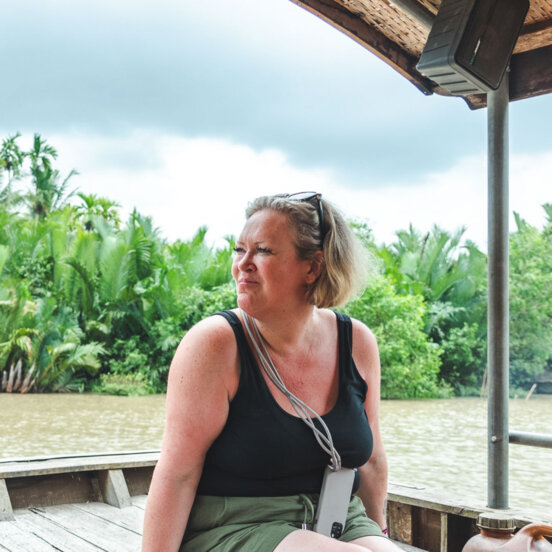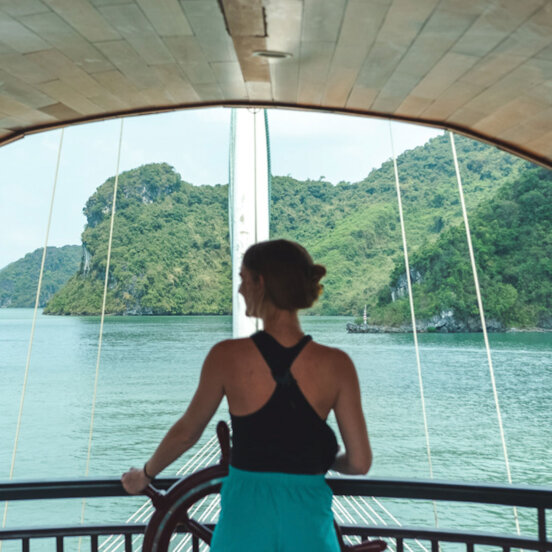Solo hiking around Iceland’s Hornstrandir, Europe’s last true wilderness

It feels like an odyssey simply to have arrived at the starting position. My flight to Ísafjörður, jumping-off point for Hornstrandir – Iceland‘s northernmost peninsula, in the far-flung Westfjords – is forced back to Reykjavik by dense cloud on the final turn over the long fjord leading into town.
For several hours, I’m left wondering if the closest I will come to seeing my destination is a glimpse from the plane window of gargantuan cliffs and turbulent ocean, the mist rendering it as otherworldly as a figment from a faded dream.
Happily, the pilot’s second attempt works – and by a margin thin as the leeway on Ísafjörður Airport’s runway, we land. I just make the day’s last boat, careening across the pewter-grey sea towards what, by many definitions, is Europe’s last wilderness.

There’s no permanent habitation
It was 70 years ago that Hornstrandir’s few remaining residents left this stark, fjord-riven peninsula which clings to the mainland by just a few kilometres of glacier-flanked fells, concurring that a year-round existence was just too tough to endure.
There has been no permanent habitation since (except for a lighthouse-keeper, who stayed in post until 1995). No grazing livestock, no cars, no roads…
However, all this has helped pave the way for a spectacular return of wildlife to Hornstrandir – including Iceland’s only native mammal, the Arctic fox. There’s also several whale species and numerous seabirds, making it possible, outside of the sporadic summerhouses on the fringes, to glean an idea of what Iceland would have been like in the late 9th century, pre-settlement.

A seasonal guesthouse serves as the only form of civilisation
Our boatload, one of the last in Hornstrandir’s extremely brief June to August tourist season, is in buoyant mood, having spotted a spouting humpback whale and a ragtag colony of puffins on the crossing. There’s also the the sight of the Drangajökull glacier, which has cut the peninsula off from the rest of Iceland for so long.
Then, with the predictable unpredictability of Iceland’s weather, we dock in Hesteyri, the miniscule port cowering sheepishly beneath a quartet of steep hills; the summer rain, biting Arctic wind and 10°C temperatures humble and numb us. We dash, as most newly-arrived hikers do, to the Doctor’s House, a seasonal guesthouse-cum-café that serves as Hornstrandir’s only form of civilisation.
Sheltered within its walls, we feast on trout, rye bread and rhubarb cake, amid the half-excited, half-daunted chatter of people who feel thankful to have made it this far, and awed by the trek ahead.

We are warmed by food and the swapping of stories
It is, perhaps, like a conversation from a hostel 30-something years ago, where the absence of 4G and TV, combined with the elemental views and the sense we’re all about to embark on one of life’s great adventures, brings about good old-fashioned traveler camaraderie.
Time soon passes and we’re off to erect our tents against the worsening weather. We are, at least, warmed by food and the swapping of stories. Everything, eating and meeting others included, feels like a small victory in such a savagely wild spot.
In almost any other café in Europe, the same group of people would have likely sat in their own worlds, staring at their own screens. Here, at the loneliest edge of the continent, we’re diverted to divulging tales. I’ve noticed this phenomenon in other remote ends-of-the-earth destinations, too. Yet, in this extraordinarily isolated spot, the phenomenon is intensified.

I’ve chosen to walk the most desolate route
“This is what I like,” says Hrólfur Vagnsson, who runs the Doctor’s House. “With small groups like this, you get the chance to properly talk. It’s lucky you are not here on Sunday. We have a large boat of 50 people coming. I don’t know how we will manage.”
The real isolation kicks in next morning. I’ve chosen to walk the most desolate route on Hornstrandir and as I round the first headland, the final trappings of human influence vanish into moss, bilberry bushes, basalt-black hillsides, snow-gouged cliffs and waterfalls.
There’s a silence, and I revel in it. Then, listening with newly-attuned ears, I hear the sounds of the middle of nowhere; the wind’s thrum, the occasional gull and, almost always, water, oozing beneath my feet through the sodden ground, bubbling in a stream, and rampaging down a cirque in ribbons of white.

Most hikers, like me, do it guide-free
There are several things about this particular no man’s land that make it stand out from the pack, even compared to other extremes I’ve experienced, like the Arctic or Amazon basin.
For one, most hikers, in Hornstrandir, like me, do it guide-free. This is solitude on a different scale. For another, your chance to chuck in the towel comes in the form of once-daily boats from certain spots that might be up to 25km away – a day’s tramp in this terrain.
Thirdly, Hornstrandir is scattered with vestiges of abandonment – a deserted croft here, a ruined whaling station there – that recall attempts to humanise the landscape, ultimately thwarted by its harsh conditions.

There is less time to think thank I had imagined
Most intensely of all, after the west coast hamlet of Sæból, there are no paths whatsoever – not so much as indentations in the scrub – for perhaps 40km.
In the pathless sense, I’m placing Hornstrandir amongst a very select group of hiking destinations. The times I’ve walked in parts of Scotland’s Northwest Highlands, there has at least been an actual trail. But, not here.
For much of my trek around this peninsula, there is also less time to think thank I had imagined. Instead, my mind is constantly pitted against the land, scouring it for ways to ford rivers or traverse ridges.

I was thrown together with like-minded adventurers
It takes a good five days to trek around Hornstrandir. Five days of seeing scarcely a soul. Yet, because of the memorable encounters I have had, I don’t recall my time here as lonely.
Instead, it’s where I was thrown together with like-minded adventurers for a while: Emma, who sold her house in Seattle to finance her trip around Europe; Jón from Iceland, taking time out from his Skyr-making business; Mylan, a veteran walker at just 23, who had hiked Australia with heatstroke and New Zealand with hyperthermia.

It’s more than worth it
“I’ve been hooked on solo hiking for five years,” Mylan tells me. “I love being surrounded by untouched landscapes and that’s exactly what Hornstrandir offered me. For anyone torn about whether to make the effort to come all the way here, things like getting close enough to Arctic foxes to see them fish, the feeling of civilisation being far away… it’s more than worth it.”
For me, it’s only through traveling solo to Hornstrandir in search of solitude that I uncovered stories shared between strangers. Yet, in the end they felt like tales shared among friends.
You can hike Hornstrandir from June to August, by flying from Reykjavik to Isafjordur and then catching the boat to Hesteyri.
To tackle the country solo in the comfort of a group, join Flash Pack’s five-day Iceland adventure, which takes in remote glacier hikes, super Jeep expeditions and serene geothermal swims.
Images: Courtesy of Luke Waterson & Adobe Stock










